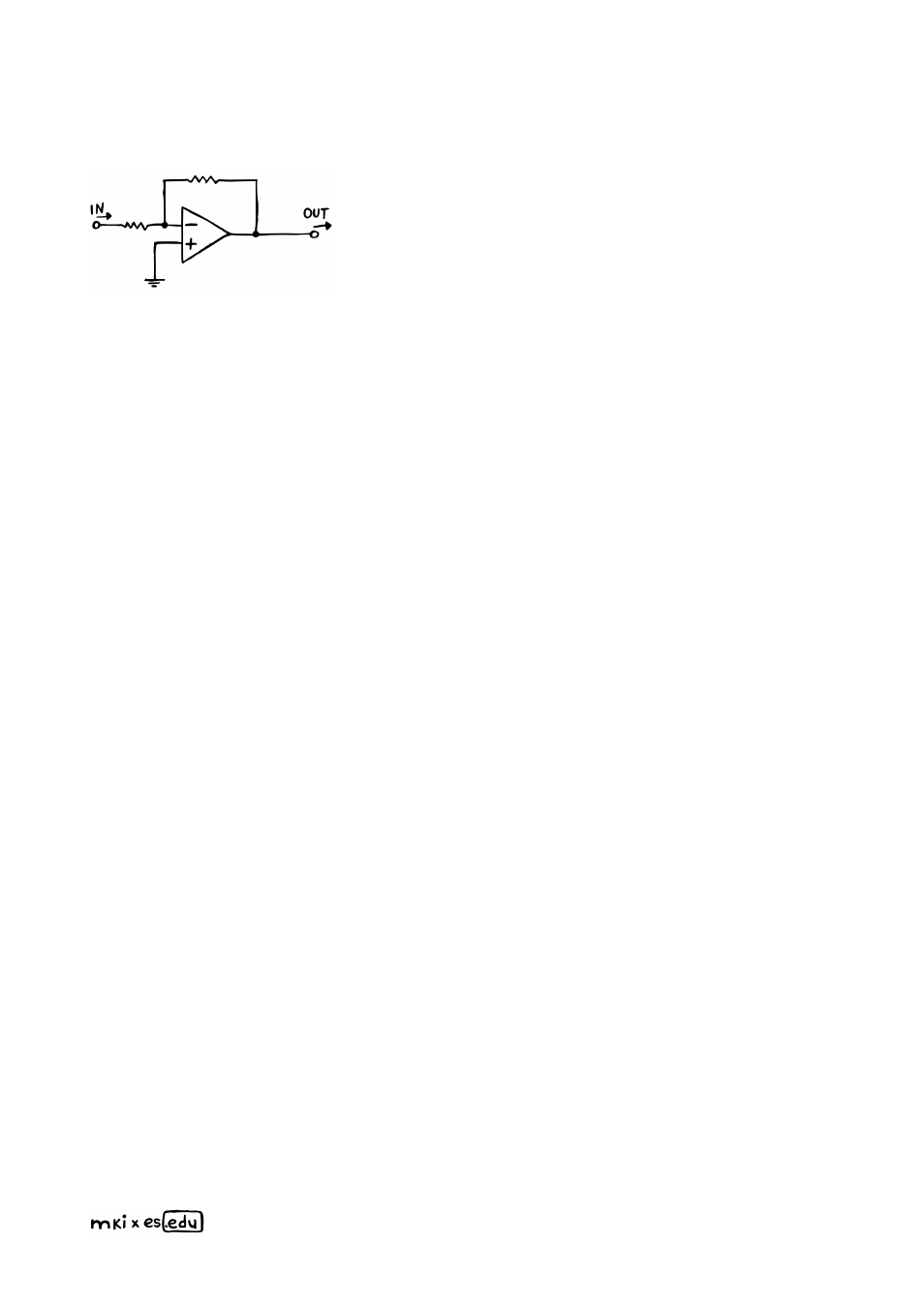Erica Synths EDU DIY Dual VCA Eurorack Module Kit User Manual
Page 41

amplifier because the output signal is in phase with the
input.
For an inverting bu
ff
er/amplifier, the input signal is no
longer applied to the non-inverting input. Instead, that
input is tied directly to ground. So it’ll just sit at 0 V the
entire time. The real action, then, is happening at the
inverting input. Here, we first send in our waveform
through a resistor. Then, the inverting input is connected
to the op amp’s output through another resistor of the
same value.
How does this work? Well, let’s assume that we’re applying a steady voltage of 5 V on the
left. Then as we already know, the op amp will subtract the inverting input’s from the non-
inverting input’s voltage, leaving us with a result of -5 V. Multiply that by the huge internal
gain, and the op amp will try to massively decrease the voltage at its output.
But as it’s doing that, an increasingly larger current will flow through both resistors and
into the output. Now, as long as the pushing voltage on the left is stronger than the pulling
voltage on the right, some potential (e.g. a non-zero voltage) will remain at the inverting
input. Once the output reaches about -5 V though, we’ll enter a state of balance. Since
both resistors are of the same value, the pushing force on the left is fighting the exact
same resistance as the pulling force on the right.
So all of the current being pushed
through one resistor is instantly being pulled through the other
.
And that means that the voltage at the inverting input will be lowered to about 0 V,
allowing our op-amp to settle on the current output voltage level. So while we read 5 V on
the left, we’ll now read a stable -5 V at the op amp’s output. Congrats –
we’ve built an
inverting bu
ff
er!
If we want to turn it into a proper amplifier, we’ll simply have to
change the relation between the two resistances
. By doing this, we can either increase
(if you increase the right-hand resistor’s value) or reduce (if you increase the left-hand
resistor’s value) the gain to our heart’s content.
41
